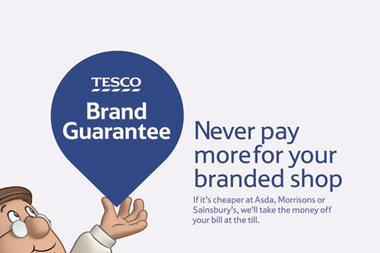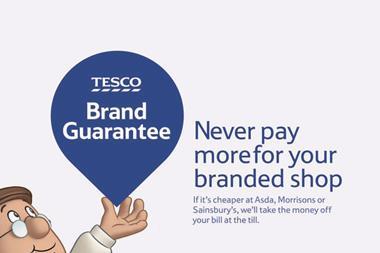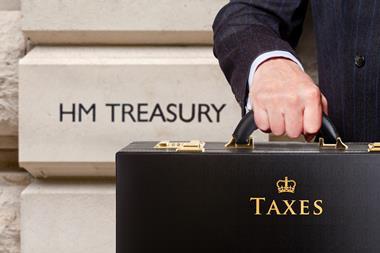
There’s something beautifully simple about Tesco’s Brand Guarantee. Other schemes are so complicated. Register this. Check that. Pick your favourites. Tot up your points. Come back next week. And don’t forget to bring the voucher with you.
Tesco’s new price guarantee, on the other hand, is instantly redeemable. It’s cashback, minus the credit card (or Nectar for that matter). It’s instant rewards. It’s a price guarantee for the modern age. Simples.
But. How will they fund this? How much will it cost? Who will pay? And will it work?
It helps that Tesco will no longer match own-label prices. That makes the scheme easier to administer (for Tesco) and to understand (for customers).
But it’s significant that Sainsbury’s, three years after its October 2011 launch, scaled back its Brand Match price promise to compare prices only against Asda. That saved it a fortune.
When Waitrose launched its Pick Your Own Scheme, Mark Price admitted he didn’t have a clue how much it would cost. “It could be very, very expensive for us, but we think giving power to the customer is the right thing to do.”
Price went so far as to suggest that PYOO would “change the market in the UK and around the world”. On the evidence to date it has certainly worked for Waitrose, with one million customers expected to pick their own by Christmas.
So how will Brand Guarantee fare? Echoing Price, Tesco chief customer officer Robin Terrell told The Grocer “We are doing this because it’s the right thing to do. We think it will engender loyalty.” But it will only be “right” if it has the desired effect on volumes. At the moment all the big four are hoping lower prices, a reduced range, an increase in store staff, and a reduction in HQ headcount will achieve this.
But they can’t all be right. And quite possibly they could all be wrong. Or to put it another way: with a differential equating to, at best, £1.40 in this week’s Grocer 33, is an instant price-matching scheme enough to make shoppers switch back from Aldi?



















No comments yet